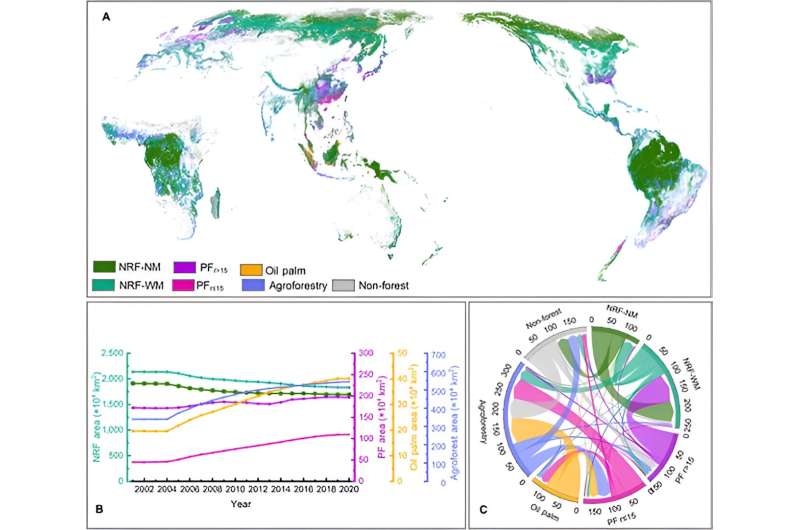This article has been reviewed according to Science X's editorial process and policies. Editors have highlighted the following attributes while ensuring the content's credibility:
fact-checked
proofread
A green revolution: How forests are changing and what it means for the planet

Forests are key to mitigating climate change through carbon absorption. Research supports forest management, like reforestation, for carbon sequestration. Yet, the impact of managed forests on soil diversity and carbon storage is debated. Understanding forest patterns globally is vital but complex due to spectral similarities in imagery, highlighting the need for detailed forest management mapping.
A study published in the Journal of Remote Sensing utilizing cutting-edge machine learning and change detection methodologies, offers an unprecedentedly detailed view of the evolution of forest management practices across the globe, highlighting significant changes in forest types and the management strategies applied to them.
This study meticulously categorized forests into six distinct management types, a novel approach that sheds light on the nuanced interplay between human intervention and forest ecosystems. Utilizing the latest in satellite imagery and machine learning technology, researchers have meticulously traced the evolution of global forest management and its impact on carbon stocks from 2001 to 2020.
The analysis revealed a nuanced landscape of change, where losses in natural forest carbon stocks were partially offset by gains in managed forests, including planted forests, oil palm plantations, and agroforestry systems. This compensatory growth suggests a complex balance between economic development and environmental stewardship. The study's nuanced examination extends beyond mere deforestation rates, offering insights into the strategic contributions of different forest management practices to global carbon sequestration efforts.
Lead author Hongtao Xu, from Beijing Normal University, states, "Our findings underscore the dynamic nature of global forests and highlight the significant role of forest management practices in addressing climate change. This study marks a pivotal step toward understanding and optimizing the contribution of forests to carbon sequestration and biodiversity conservation."
This study's insights are vital for policymakers, conservationists, and researchers, providing a data-driven basis for enhancing forest management strategies. By understanding the spatial and temporal changes in forest composition, stakeholders can better align reforestation and conservation efforts with global climate goals.
More information: Hongtao Xu et al, Changes in the Fine Composition of Global Forests from 2001 to 2020, Journal of Remote Sensing (2024). DOI: 10.34133/remotesensing.0119
Provided by TranSpread





















